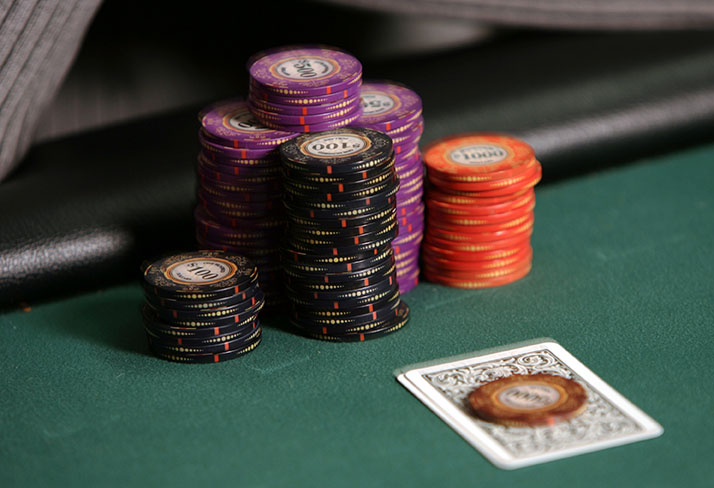The Ultimate Poker Face
A player’s chips and cards await a bet during a poker tournament on Friday, June 22, 2012, in Edmonds, Wash. (Kevin Fujii/MCT)
Many people look down on Texas Hold-em Poker as addictive gambling, comparable to alcohol, smoking, and other lowly habits. Yet I regard the game as being a masterpiece of strategy, cunning, and valuable for all ages.
People commonly fall into the habit of associating poker with the people and games that surround it, causing the game to acquired a negative stigma. In actuality, unlike slot machines, roulette, and even blackjack, the amount of influence that a skillful player can have is tremendous.
Now, many people may be thinking that this article will analyze intellectual strategies like bluffing, mathematical reasoning, and game theory to arrive at the conclusion that poker is indeed a game of strategy. However, I would first like to disregard those strategic elements for the moment and simply analyze the broader statistics of the game itself.
Consider this, in a Citadel study of over 100 million poker hands, only 25% of all hands (1 in 4) go to a showdown, and only 12% of hands are actually won by the best hand. For those unfamiliar with the game, a showdown is when all players turn over their cards and the best hand wins (which occurs in any hand in which everyone does not fold their cards).
The only time that the value of a hand actually matters is if a matchup goes to a showdown. This means that 75% of poker hands are decided regardless of the strength of the winner’s hand. These hands could be won by the player with the worst cards, if that player played smart. Forget the individual strategies, this data alone shows how much room there is to win hands.
In regards to actual strategy, poker is a far more intricate game than can be explained within this article. The basic idea is that, factoring in all external influences, there is a greater probability of winning than the ratio of how much it costs to call a bet compared with how much money is in the pot.
For example, if I calculate that I have a 20% chance of winning the pot, I should call a bet for $100 if there is $1000 currently in the pot. 100 is 10% of 1000 whereas I stand a 20% chance of winning. This may seem counterintuitive in that the player is favored to lose the hand, yet this is a game of long-term yield. For example, a bet of $300 on the other hand would compel the player to fold.
While these factors are isolated, it is easy to make the correct decision. The challenge comes in with the unknown. As a poker player, you do not know for certain if the opponent actually has a strong hand, or if he or she is bluffing. That likelihood must be factored in to calculations.
A player must also consider the likelihood of the opponent(s) folding their own cards if making a bet is in question. Table presence implications should also be viewed at in the long-term, for a player often varies their level of risk taking to throw off opponents.
For example, a player who rarely stays in poker hands unless they have an extremely strong hand (known as conservative or “tight” playing) will often tempt people into folding more than an open risk taker (known as “loose” playing).
In addition to synthesizing the information that you are given from other players, a player must monitor his/her own signals. This means maintaining a poker face, varying between tight and loose strategy, and countless other minutia.
The strategy only amplifies in a tournament game (my personal game of choice) when a set number of people in the tournament that are left are payed. Many games are even online adding the possibility of keeping digital notes of other players, tracking hands, and utilizing the time during your turn as information analysis components.
Psychology, mathematics, logic, and acting all fuse together when a player sits down at a table in a casino and says, “Deal me in.”


